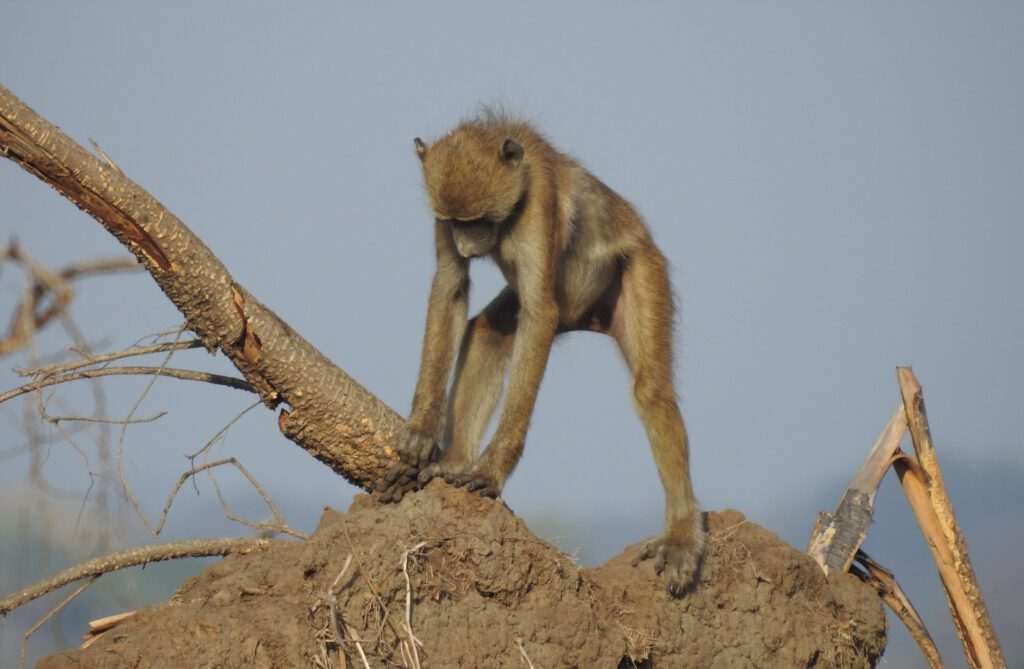Fieldwork-driven discoveries explore the evolution of movement, memory, meaning, and voice in animal behavior.
From travel routes to tool use, genetics to group dynamics, new research studies conducted by the Gorongosa science and research team are expanding what we know about the lives of primates and bats. These discoveries span the spectrum of cognition, culture, care, and connection—and they reflect the kind of insight only possible through long-term fieldwork, interdisciplinary collaboration, and deep curiosity.
Congratulations to Dora Biro & Susana Carvalho, Lynn Lewis-Bevan, Elodie Freymann, and Maria Joana Ferreira da Silva & Felipe Martínez for advancing our understanding of primate behavior, ecology, and evolutionm and to Cesária Huó for her insights into bat vocalizations. We’re proud to celebrate this remarkable run of scientific contributions—and look forward to future reports.
The Traveling Salesbaboon: Chacma baboon route efficiency in multi-stop daily travel routes
A new paper on Gorongosa baboons by Lynn Lewis-Bevan and colleagues highlights that baboons also plan a little travel. Like traveling salesmen planning stops, our park baboons plan daily routes between food, water and sleeping spots. GPS data shows that they don’t just go to the nearest location, but also follow more intelligent routes, although not always on the perfect path. https://www.mdpi.com/3042-4526/2/2/18
West Side Story: Regional inter-troop variation in baboon bark-stripping at Gorongosa National Park
Some baboon troops strip bark from Acacia robusta trees in Gorongosa National Park, others don’t. Same park, same trees, but different habits. The researchers found that this behavior clusters by region, not by food needs or environment. Could baboons be passing it on culturally? https://onlinelibrary.wiley.com/doi/10.1002/ajpa.70057
What language do bats speak? Cesária Huó is trying to find out.
Cesária Huó is collecting bat vocalizations to understand how the sounds they make evolve. Every bat call has a story—and Cesária is listening. Huó, a conservation scientist at Gorongosa National Park, is recording bat calls to discover how their vocalizations change over time. https://www.nature.com/articles/d41586-025-01469-2
Sex-mediated gene flow in Grayfoot Chacma Baboons in Gorongosa National Park
New research from Gorongosa National Park shows how baboons are thriving despite the war’s lasting impact on the ecosystem. Scientists discovered the grayfoot chacma baboons of Gorongosa National Park have maintained high genetic diversity and stable populations. The study also found that male baboons are the ones moving between groups, helping connect populations across the landscape. This research, conducted using non-invasive genetic sampling, supports conservation and helps us understand how primates adapted to environmental change, with potential implication for early human evolution. Read the full open-access study: https://link.springer.com/article/10.1007/s10764-025-00494-2







